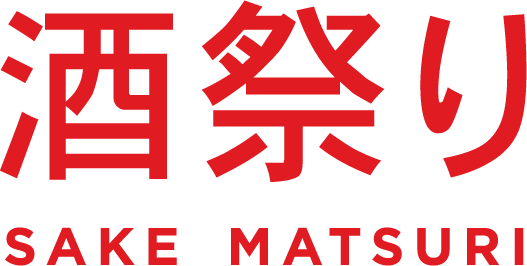RICE:
The first step is to prepare the rice. Once the rice has been harvested and dried, the outer husk is removed and the grains are polished. How far the grains are polished will impact the sake’s flavour: if the rice has only been lightly polished, say to 80% (20% of the outer grain milled away) the sake will have a more robust aroma and flavour. How far the rice is polished will also determine its grading and style.
BREWING PROCESS:
Once the rice is polished, it is washed, soaked and cooked (by steaming). The steamed rice is then taken to the kōji room (similar to a sauna) where it is laid out on a cedar table and sprinkled with kōji spores (the mould that breaks down the starch in the rice into sugar, which later converts into alcohol). The rice is left in the kōji room for about two days.
FERMENTATION:
How the Tōji (master sake brewer) proceeds from this point will determine the style of the sake. Firstly, either cultivated or natural yeasts are added to a small ferment tank known as a moto or shubo. Once the yeasts have multiplied, they are added along with steamed rice, kōji and water to a larger tank to make the main ferment (known as moromi). Particular ways of grinding the moto (i.e. with wooden paddles), or the optional addition of lactic acid, will impact the sake’s classification. Three more additions of steamed rice, kōji and water are then added to the moromi over four days, and then the mash is left to ferment for between two to four weeks.
POST-FERMENTATION:
After fermentation, the liquid is separated from the solids either using an automated press (called an assakuki), a traditional press (called a fune), or hung in canvas or cloth bags. It is then up to the Tōji to decide whether the sake should undergo clarification, stabilisation or pasteurisation, to result
in the final product.
GLOSSARY
ARABASHIRI: Rough Run. This is the free run of the fresh sake liquid, captured before the actual pressing begins in the post-fermentation stage. The sacks full of fresh sake (both liquid and solids) are arranged in the tubs and the sake slowly seeps out due to the natural weight of the sacks’ contents. The liquid is bottled directly.
DAIGINJŌ: One Japanese classification of sake. To be classified daiginjō, the rice grain must be polished down to 50% or less of its original size (it must also meet the quality requirements that the sake has a good flavour, colour and luster).
GINJŌ: Another Japanese classification of sake. To be classified ginjō, the rice grain must be polished down to 60% or less of its original size (it must also meet the quality requirements that the sake has a good flavour, colour and luster).
GENMAI: Genmai means brown rice, so genmai-zake means brown rice sake. The ‘s’ becomes a ‘z’ to make pronunciation easier.
GENSHU: Undiluted sake. Many types of sake are diluted with water after brewing to lower the alcohol content from 18-20% down to 14-16%. Genshu means that no extra water has been added.
JUNMAI: 100% pure rice sake without any additives such as ethyl alcohol, sugars and starches. Junmai is sake made of rice, water, yeast and kōji-kin only. Before a law change in April 2004, rice had to
be milled down to 70% at least but now junmai no longer requires a specific milling rate. However, the amount milled away must still be listed on the label by Japanese law.
KIJŌSHU: Noble-Brew Sake. Generally aged before being sold. To make kijōshu, the Tōji does not add distilled alcohol, but instead a full-bodied sake from previous years is added to a still fermenting
batch, bringing the fermentation to an early halt. There are some similarities in production technique to that of port wine, although the kijōshu technique has a much longer history.
KŌJI-KIN: A starch-breaking mould with the Latin name Aspergillus Oryzae that coats the rice with a white, very fragrant outer layer that produces enzymes to convert the rice starch to sugar.
KURA: When used in sake terms it means the sake brewery.
KURABITO: Sake brewery workers. KURAMOTO: Owner of the sake brewery. KOSHU: Aged sake.
MEIGARA: Brand. Most sake breweries produce many types of sake, so they tend to give each a unique name. An example is Mukai Shuzō Ine Mankai. The Mukai Shuzō is the brewery name and Ine Mankai is the meigara or brand name.
MUROKA: No charcoal filtration. This sake has been pressed and separated from the lees, but hasn’t been filtered with carbon.
NAMA: Unpasteurised. Namazake means unpasteurised sake, but the ‘s’ becomes a ‘z’ to make the pronunciation easier.
NIGORI: Cloudy. The sake is passed through a loose mesh to separate it from the mash but as it is filtered no further, the sake retains sediment from both rice and kōji in the finished sake. In the case of Usunigori the result is only lightly cloudy, where the lightest part of the sediment is left in from the soft pressing of the sacks filled with fresh sake (liquid and solids).
NIGORIZAKE: Cloudy sake, but the ‘s’ becomes a ‘z’ to make the pronunciation easier.
NIHONSHU: Japanese sake. The word sake in Japanese actually refers to all alcoholic beverages, but outside of Japan when we use the word sake we are referring to the alcoholic beverage made from rice.
PREFECTURE: The country of Japan is broken down into 47 locally governed units called prefectures. 39 of these prefectures are bordered in some way by ocean or sea, leaving only 8 prefectures landlocked.
SHUZŌ: Sake brewery, for example: Mukai Shuzō means Mukai Sake Brewery.
TŌJI: Master Brewer / Head Sake Brewer
